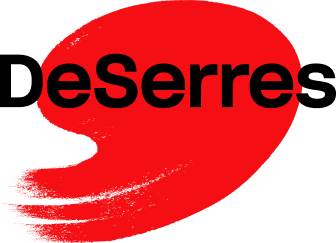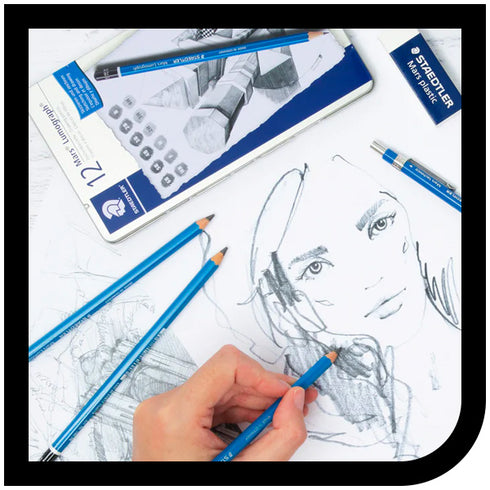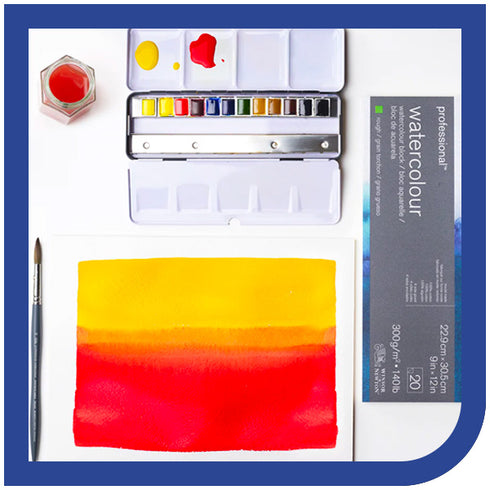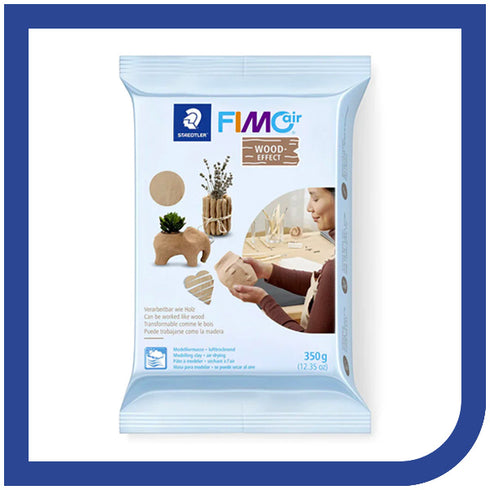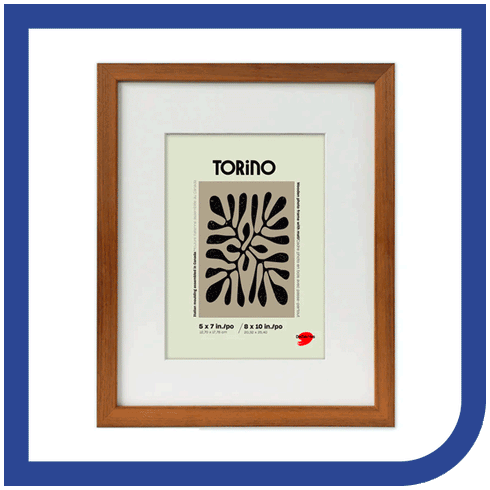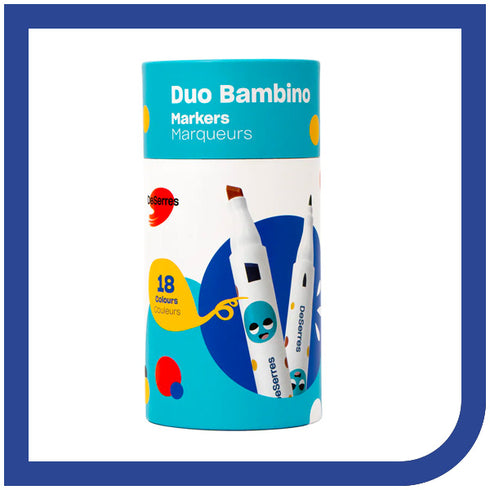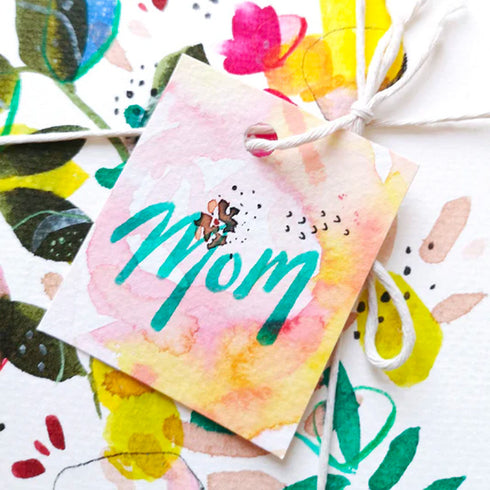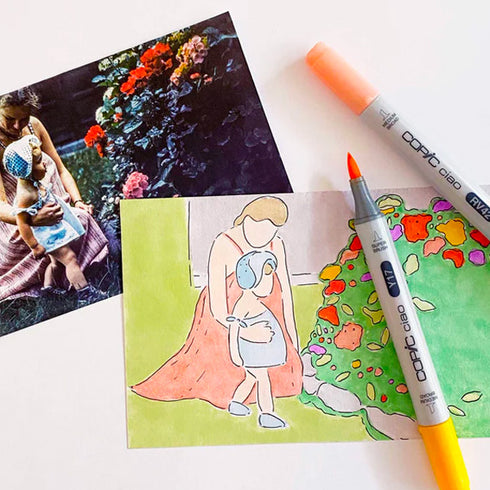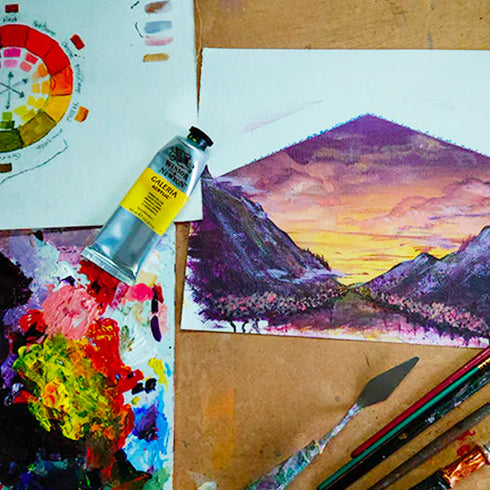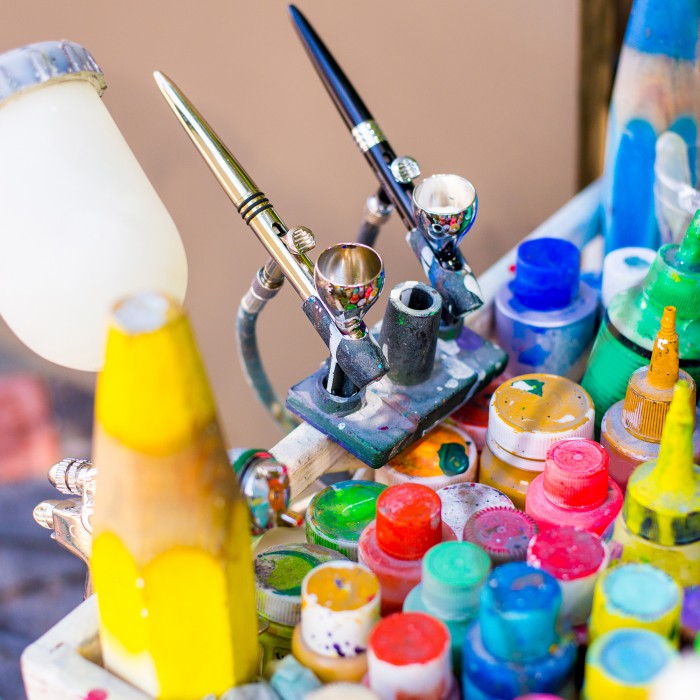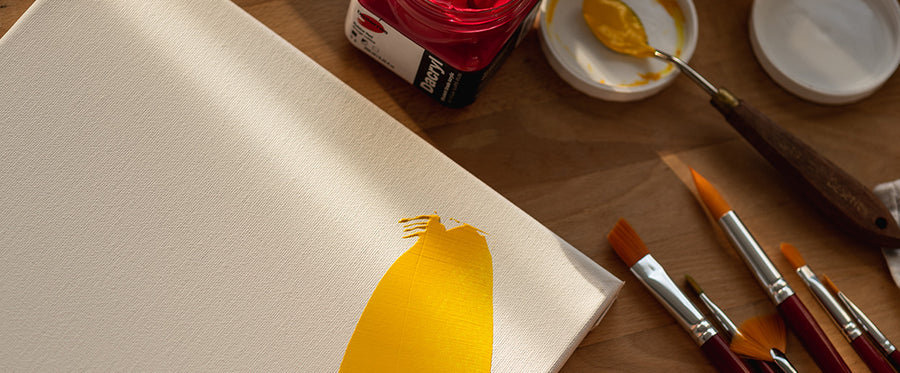Like traditional paint guns, airbrushes allow you to spray paint on any surface using compressed air; however, they’re much smaller. What makes them unique is their ability to spray paint very precisely on any type of surface (canvas, bodywork, wall, fabric, model, or even pastries, clothing, etc.). With a good mastery of techniques, you’ll be able to draw very fine designs (less than half a millimetre thick), but also achieve superb gradient effects, and of course, colour larger surfaces. Airbrushes are suitable for acrylic paint, watercolour and ink.
GRAVITY FEED AIRBRUSHES VERSUS SUCTION AIRBRUSHES
Gravity feed airbrushes have a paint cup at the top of the airbrush where the paint is poured. Gravity pulls small amounts of paint into the mixing chamber where atomization occurs. They’re handy, resistant and versatile, and are recommended for more detailed work, drawings, models, etc. Suction airbrushes have a cup on the side of the airbrush (usually on the right) for small volumes, or under the airbrush for large volumes. Paint is drawn into the mixing chamber (suction effect), and then sprayed. Since the cup is removable, its volume can be adapted to the desired finish. This type of airbrush requires good paint preparation prior to use, so it’s a little tricker to master. If you’re left-handed, you’ll have to choose an airbrush with a left-feed cup. This type of airbrush is recommended for larger projects such as home decoration.

SINGLE-ACTION AIRBRUSHES VERSUS DUAL-ACTION AIRBRUSHES
Single-action airbrushes are ideal for beginners, as the trigger controls airflow. They’re easier to hold, simple to use and maintain, and are suitable for users of all skill levels. Ideal for colouring large, solid surfaces, they’re also suitable for creative hobbies, painting high-viscosity materials and ceramic glazes. Dual-action airbrushes allow you to control both the air and paint flow. They require a little more experience, but once mastered, allow multiple effects. Ideal for drawing, you can create so many different designs, as well as gradient and shading effects. Their ergonomic grip makes it easy and fun to paint for several hours. Must be cleaned thoroughly.

AIRBRUSH ACCESSORIES COMPRESSOR
The compressor is essential, because without pressurized air, your airbrush is useless. At DeSerres, we offer two types of compressors: The Iwata Sprint Jet compressor is ideal for amateur and professional artists. It’s powerful, compact, reliable and silent. The robust and fully automatic DeSerres 1/4 HP CD-63 compressor is equipped with a large 5.5-litre tank that fills automatically if necessary. Built-in coolers, safety valves, and an automatic shutoff function prevent overheating. Almost no maintenance is required. It can be used with four airbrushes, provided that the required air amount does not exceed the volume produced by the compressor.

NOZZLES AND NEEDLES
For more creative freedom, we recommended having a set of nozzles and needles. This way, you can draw very fine shapes, as well as colour large surfaces. Begin with sizes 0.2 mm to 0.5 mm; the smallest diameter corresponds to fine line projection. Fine and medium sizes are ideal for making fine lines, or for covering large surfaces. Nozzles and needles are very fragile, so be careful when using them, especially when dismantling and cleaning your airbrush.

PREPARING THE PAINT
It’s important to dilute your paint beforehand. Undiluted paint will be difficult to spray with a 0.2 mm nozzle, and you might clog your airbrush. Paint that is too diluted will be too liquid, will not stick, will not cover, and will leave rings. A well diluted paint will spray easily, the finish will be smooth, and it will cling easily. Createx airbrush colours are among the most widely used airbrush paints in the world. They’re designed for fabric, and for most surfaces such as wood, leather, ceramic, canvas, aluminum, nails, and more. They’re water-based, can be mixed with each other, and dry to a matte finish. Several mediums can dilute or modify colour opacity. Golden's airbrush medium increases the fluidity of acrylics, and Schmincke's Aero Opak medium increases colour opacity.

PREPARING YOUR SURFACE BEFORE AIRBRUSHING
To paint on fabric, you must wash it without fabric softener (if it’s cotton). If the fabric is synthetic, use a transparent Createx base. Iron at the end to secure your design. Cell phone cases must first be sanded with a fine grain black sandpaper (400 or 600). Cover your cell phone case with a plastic primer before painting. To protect your work, add a plastic varnish. Metal plates must first be sanded (400 or 600 grain) and primed so that the paint sticks.
USING AND CLEANING AIRBRUSHES
We strongly recommend using airbrushes in an open environment, or wearing a mask. Airbrushes project paint particles that stay in the air and can be harmful if inhaled. You should clean your airbrush after each use. You can clean it with alcohol, or with products that are better suited to the type of paint used. Cleaning your airbrush properly after each use is crucial to maintaining an efficient, operating airbrush, and to achieving quality creations!








